A few overlooked novels from 2006
Alright, I know half of 2007 has gone by before I post this list of intriguing books, but maybe by this time they will have been issued in paperback. A few of these titles did get some decent exposure, but the reading public really didn’t know what to make of them. It comes down to fear: Fear of trying something new, something different or something off the beaten path that’s not a clone of King, Grisham, Evanovich, et.al. Sometimes it pays to take a chance. Many would be considered slipstream novels, but others have a solid genre categorization. Listed in no particular order:
Three Days to Never by Tim Powers

Tim Powers seems to perpetually fly under the radar even though his novels are critically acclaimed and this one is no exception. Here we find Einstein did discover a way of time travel but tried to hide that fact as it scared him a great deal. However, his direct descendants from present time unintentionally uncover this secret and are being pursued by the MOSSAD and a Gnostic sect from Europe who have been at lengths trying to recreate Einstein’s find. Power’s novels are usually populated with fascinating characters bordering on the edge of believability. In this case, there’s a young blind female assassin who can see through other people’s eyes close to her, among others just as interesting.
The Brief History of the Dead by Kevin Brockmeier

Sometimes ‘what if’ stories can truly be fun to read, but also just as thought provoking. What if the dead dwell on an alternate plane of existence surviving only because someone remembers them, then slip away once the living memories are gone? What if humans are wiped out by a virulent plague save for a lonely researcher based in Antarctica? What happens then, when there’s only one person left alive? This is the premise of Brockmeier’s fascinating novel. Alternating between the dead and the researcher’s attempt to survive, this novel delves into the nature of relationships and the interconnectedness shared by people.
The Glass Books of the Dream Eaters by Gordon Dahlquist
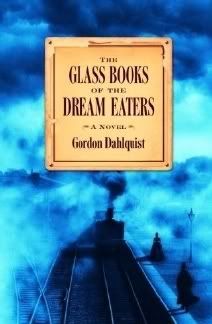
Dahlquist has given us a Victorian gothic mystery that would be welcome in any Sherlock Holmes’ fan library. Although it is long and could be considered challenging, the descriptive prose works well and thus the length. Could it have been edited better? Well, yes, but even at a whopping 800 pages it didn’t really bother me as the lengthy descriptions added layers to the atmosphere already redolent with an airy aplomb. Here we have some of the most human and intriguing protagonists thrown together in what appears to be London, although it is never stated as such. Celeste Temple is an upper class lady who follows her fiancé after he abruptly ends their engagement with no reason and finds he is embroiled in an eldrich alchemically fueled plot. She eventually allies herself with Dr. Swenson, an awkward military doctor cum diplomatic officer whose royal charge is involved in the plot as well, and an assassin simply known as Cardinal Chang. Very character driven and imaginative.
The Book of Lost Things by John Connelly
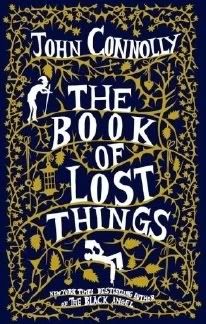
John Connolly creates dark thrillers like an expert sushi chef prepares sushi, that is, sublimely. In this book, however, Connolly goes in a different literary direction; dark fantasy. David, a 12 year old boy whose mom died near the beginning of WWII, currently has stepmother he does not like. And to make matters worse, she is pregnant, making David fear this complication in his life will take his father’s attention from him. He lives in her house and his room has books that inexplicably whisper to him. Then one fateful night he is caught outside in the ground’s sunken garden and when he is scrambling for his life he suddenly finds himself in another world where traditional, dark fairy tales are alive. (Very much like the Wardrobe from another beloved book.) David is pursued by nasty half-human, half-wolf creatures and the sinister Crooked Man as he runs across a myriad of characters from lore to try to get back to his world. (The funniest and most twisted of which is the 7 Dwarves spouting labor laws and their own Communist Ideal with a totally bossy and repugnant Snow White.) John Connolly’s fantasy debut places him in good company with Charles de Lint, Neil Gaiman and Robert Holdstock.
World War Z by Max Brooks
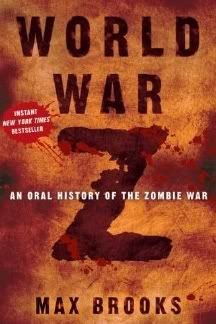
Subtitled An Oral History of the Zombie War, this book is exactly that. I’m sure that even fans of zombie movies do not necessarily want to read about them, but do not let the title fool you. What if there was a zombie outbreak? Brooks delves into that question with broad, yet detailed strokes. This is a first rate suspense novel written as a collection of interviews of survivors of the zombie infection from around the world. Brooks does not fall into the trap of trying to explain how zombies came into being (sort of like how the first vampire came to be), but instead gives us a place of origin (patient zero was a child in China) and how it spread through the world by ignorance, greed, shortsightedness and uncooperativeness. The true power of this novel becomes apparent when one substitutes the word ‘virus’ for ‘zombie.’
The Man from the Diogenes Club
by Kim Newman
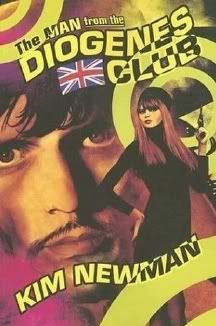
British Movie/TV critic and novelist, Kim Newman, has been writing in tune with a certain appreciation of pop culture throughout his writing career. And in this fine collection of short stories, he has out done himself in this regard. These stories revolve around Richard Jepperson, a toned down Austin Powers, complete with serious Mojo and wardrobe, minus the silliness. Jepperson is a member of the Diogenes Club (as first mentioned in Sherlock Holmes stories), a semi-secretive cabal of the British Government that is sent off to deal with any out of the mainstream weirdness (mostly occult, like a toned down Lovecraft) that crops up. Each story progresses through Jepperson’s time with the Diogenes Club, starting in the 70s and ending in the contemporary times. Newman imbues each story with enough British pop culture references (complete with glossary in the back, even with references to Newman’s other novels where characters show up in) to be an Anglophiles wet dream.
The Wall by Jeff Long

Boulder author, Jeff long came out with one of my top ten books in 1999 with The Descent, a modern unapologetic horror novel that tackles the origin of the devil in a very realistic way. Here he gives us a ghost story in the true sense of the term that takes place within several days as rock climbers tackle Yosemite's El Capitan. The tone is very similar to another ghost story he had written earlier titled The Reckoning, based in the killing fields of Cambodia. Very atmospheric with images that stay with you for a long time. A mountaineer himself, Long is very detailed with the climbers’ ascent of that fabled monolithic granite slab.
Skinny Dipping in the Lake of the Dead: Stories by Alan Deniro

Deniro’s 16 short story collection runs the gamut from alternative history to fantasy to slipstream. Like many good writers such as Jonathan Carroll, Bradley Denton, Jonathan Lethem, DeNiro makes ordinary every day settings seem out of the ordinary, sometimes subtly and other times outrageously. Either way he is a writer to keep an eye on.
Out of Thin Air: Dinosaurs, Birds, And Earth's Ancient Atmosphere by Peter Douglas Ward
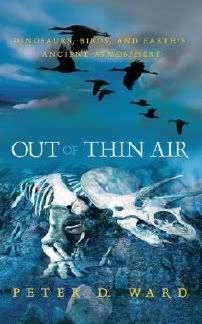
This list reflects the percentage of fiction vs nonfiction I usually read and thus this is the only nonfiction in the list. I’m picky as to what I read and it is even more so with nonfiction. Peter Ward is a professor of geology and an expert on mass extinctions and the author of Rare Earth, a book where he proposes that life in the universe would be rare due to all the conditions that would be necessary. In his latest book, Ward puts forth a theory that from the Cambrian period onward, dinosaurs survived several extinction events due to rapidly evolving respiratory systems to compensate for varying oxygen levels. Taking cues from modern birds (considered the modern predecessor to the dinosaurs), where geese are known to fly above the Himalayas where man is hard pressed without supplemental oxygen to survive, he takes a look at the development of not only respiratory systems, but egg vs live birthing and cold vs warm bloodedness. Fascinating premise and a great read for those interested in paleontology.
Of Note:
Smonk by Tom Franklin
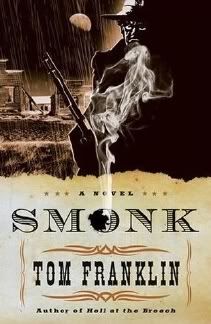
This Southern gothic is definitely not for everyone. After reading it I’m still not sure what to make of it but it is a wild ride full of brutal murders, rapes, rabies, drought, fires, prostitution, fake eyeball sucking and much more. As grim as Stewart O’Nan’s A Prayer for the Dying, but whereas that novel stays firmly cloaked in horror and despair, Smonk has more than its share of black humor that shines through the grit. At the turn of the 20th century, a trial for multi-time offender with multiple charges, E. O. Smonk, goes terribly awry. Thus a manhunt is underway in Old Texas, Alabama as 15 year old prostitute, Evavangeline, heads towards the area pursued by her own past, towards a confrontation the town would be hard pressed to survive.
Half Life by Shelley Jackson

Not to be confused with atmospheric horror great, Shirley Jackson, Shelley Jackson has written a dense novel with one of the most unusual protagonists, a conjoined twin, Nora and Blanche. Jackson depicts a parallel world where in the US radioactive fallout creates a Siamese twins subculture based in San Francisco. Nora is loving life, however her twin, Blanche, is in a coma-like state. What propels this satire is Nora’s quest to find a way to get rid of Blanche. Neatly interspersed between chapters there are cultural and psychological tidbits based on conjoined twins and some of the funniest are from The Siamese Twin Reference Manual such as “solo S&M for the single twofer”, “items from the Delta Skymall Catalog for twofers” and “the Twofer pride Film Festival.” It’s an intriguing look at identity.

0 Comments:
Post a Comment
<< Home